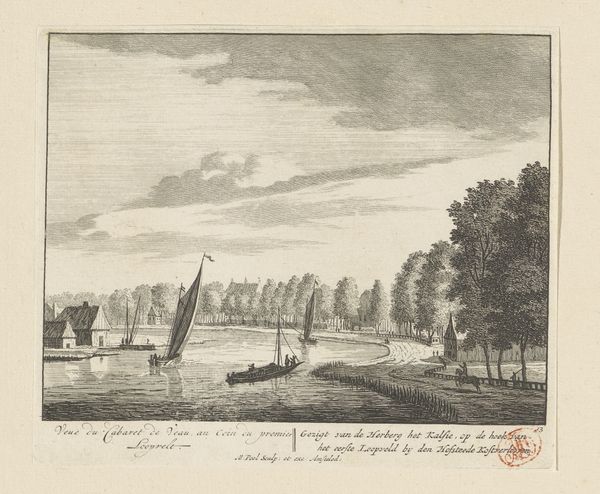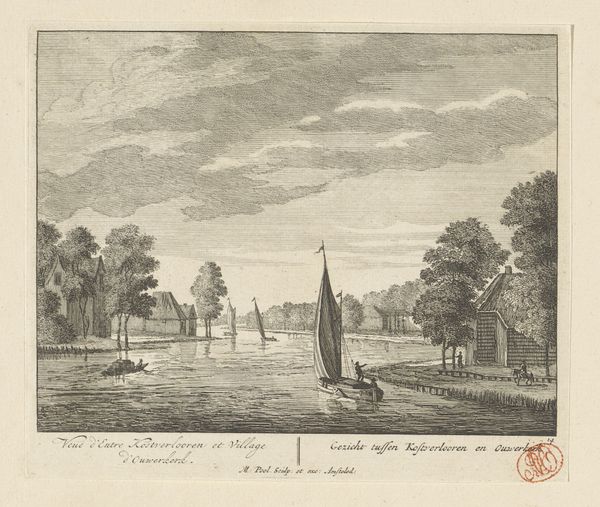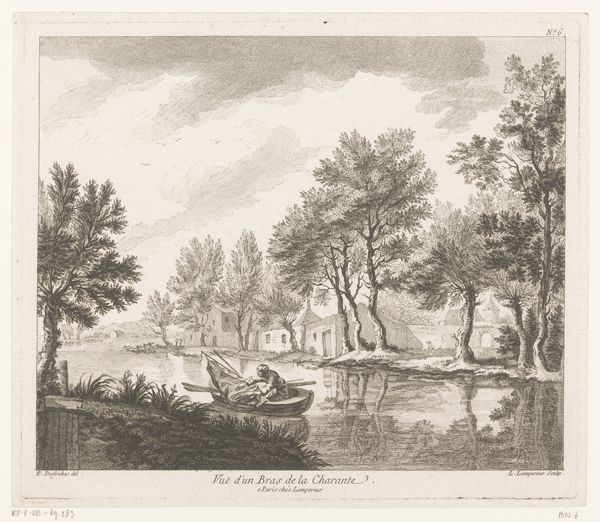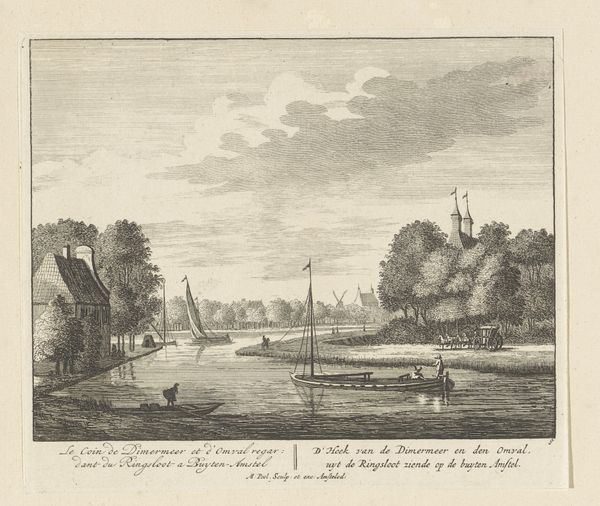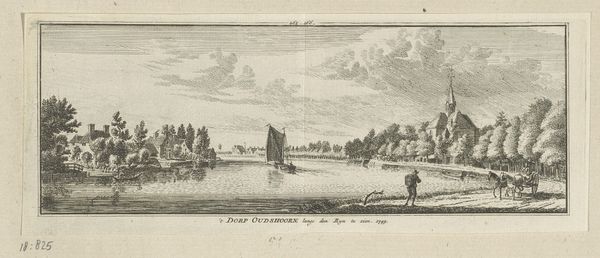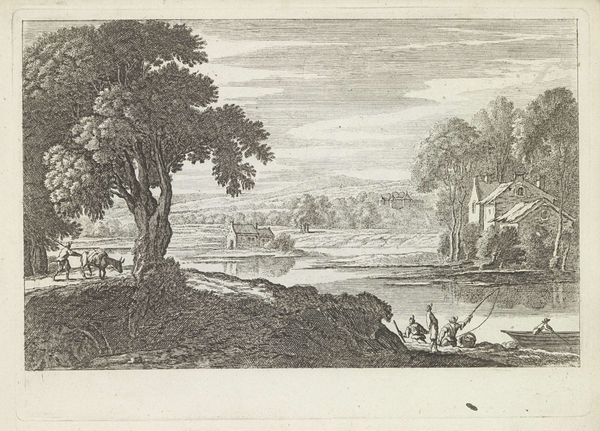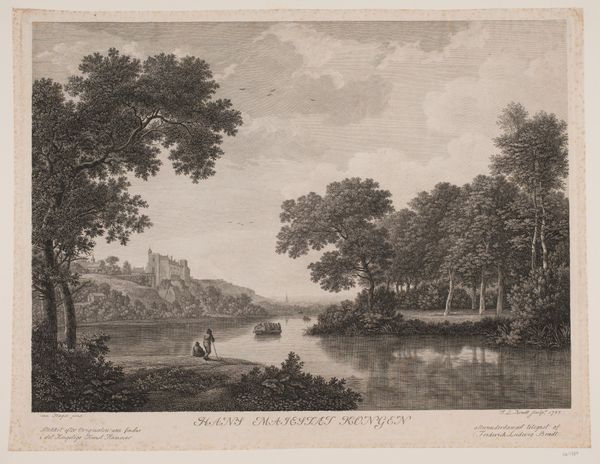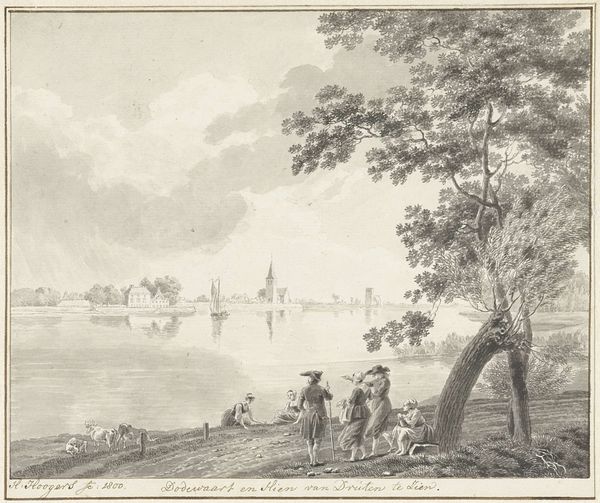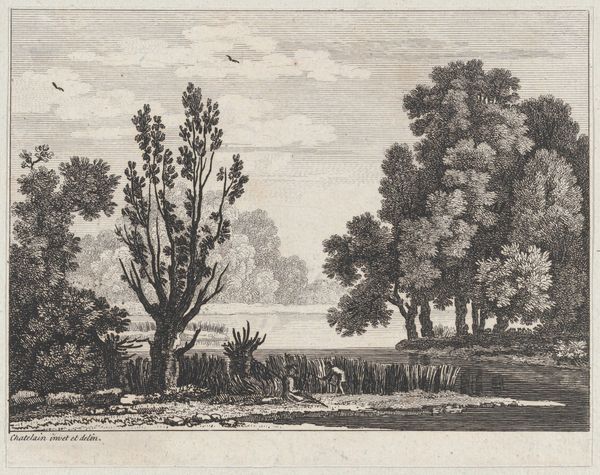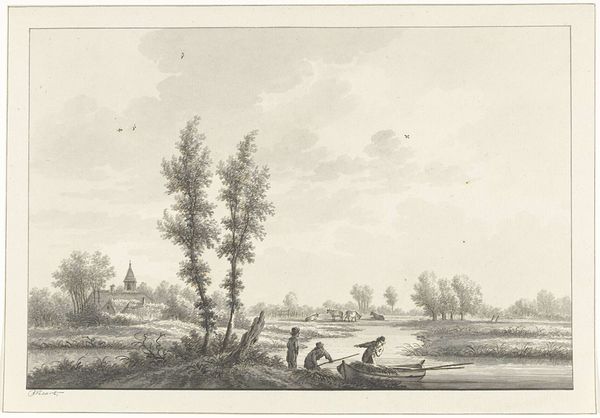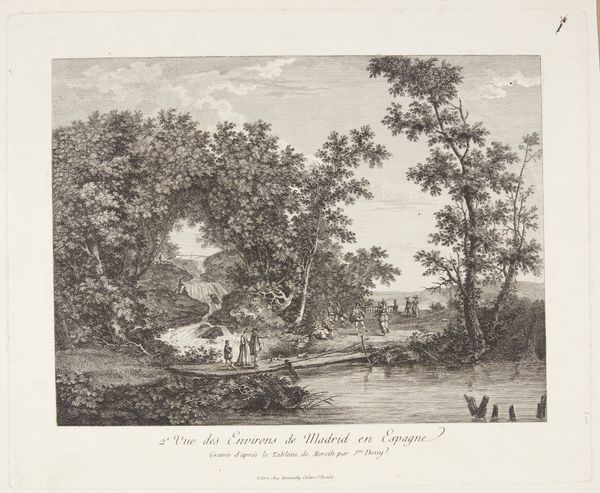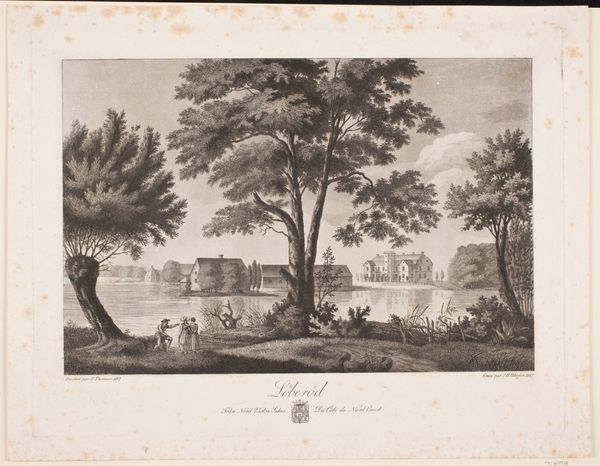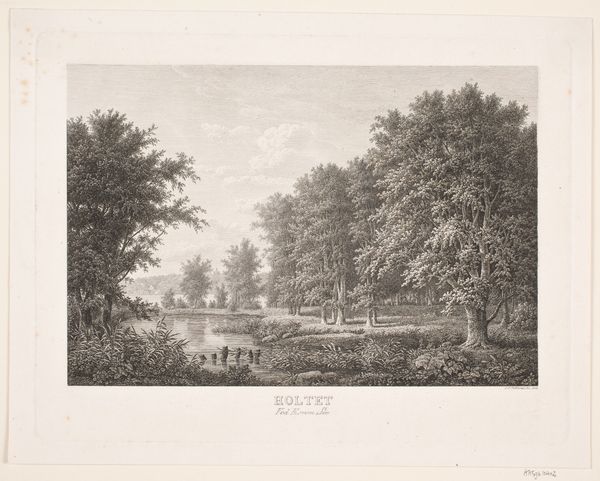
Dimensions: 265 × 355 mm
Copyright: Public Domain
Curator: Looking at this tranquil landscape, I immediately feel a sense of Romantic melancholy, a characteristic mood of the late 18th century. Editor: Indeed. This etching from 1778, by Jean-Michel Moreau the Younger, depicts the "Tomb of Jean Jacques Rousseau." It’s not just a landscape; it's a constructed space, a deliberate memorial. Curator: I’m struck by how the artist uses light and shadow. The stark contrast amplifies the emotional weight of the island tomb, doesn't it? There's a sense of pilgrimage implied in the boating figures, coming to connect with Rousseau. Editor: Exactly. This image needs to be situated within its socio-political context. Rousseau, as a philosopher, was incredibly influential. His ideas on natural rights directly inspired revolutionary movements. This idyllic tomb becomes a site of potent symbolic power. Curator: Do you think the choice of the island is deliberate? The enclosed space feels like a metaphor for introspection and isolation, something central to Rousseau's philosophy of the individual. Editor: Yes, and that sense of isolation also mirrors his own life, his at times contentious relationship with the French establishment. And there's this implicit comparison to the Elysian Fields, paradise for figures favored by the gods, a highly contested placement. Curator: Absolutely. It highlights how his ideas about individualism and challenging societal norms led to him being both celebrated and condemned. It's a fascinating image when considered through that lens. Editor: A work that truly captures its complex cultural and intellectual landscape. Its simplicity and directness amplify what was anything but. Curator: I’ll leave with the thought that while Rousseau died over 200 years ago, his impact continues to shape the political and artistic dialogue around the world, made vivid through pieces like this one.
Comments
No comments
Be the first to comment and join the conversation on the ultimate creative platform.

